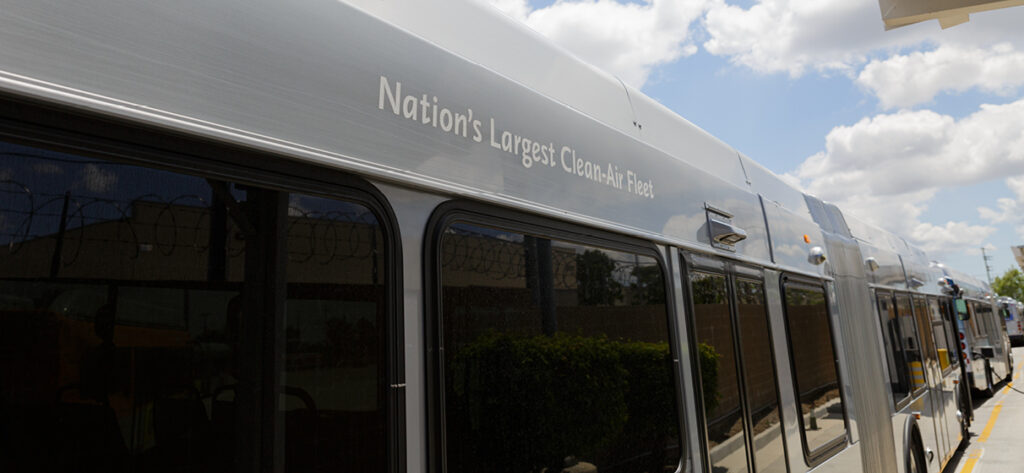As the public transit sector continues to make its transition to zero-emission technology, more focus and planning is turning toward workforce development and preparing current and future generations for this paradigm shift.
Across the industry, concerns remain that the existing transit workforce remains unprepared and equipped for this transition. While some transit agencies have made significant inroads in getting their workforce trained, there is still more work to be done, especially as it relates to evolving titles, functions and responsibilities.
STV’s Senior Vice President and Director of Zero Emission Transition, Craig Cipriano has been working closely with transit agencies across the United States and Canada to develop both long-range plans for zero emission implementation and workforce development. In this roundtable article, Cipriano expresses his personal insights about the zero-emission transition’s impact on the workforce alongside Tom Lenane, vice president in the Transport Workers Union (TWU) International, a leading labor union representing the airline, rail and transit industries. As an International officer for over 20 years, Lenane has worked with other bus transit, rail and airline representatives. He’s been with the TWU for 37 years and has 39 years of service as a chassis maintainer (mechanic). Initially, he started off as a TWU local 100 Representative at the New York City Transit Authority. He currently serves as the TWU Local 100 Maintenance Director.

Changing Technology
Craig Cipriano: Tommy, we both remember our days at 54th Street Depot where diesel buses belched blue, white and black smoke and how technology has evolved over time. As technologies evolved we introduced Compressed Natural Gas and then Hybrid Diesel Electric to our customers and workforce. All this transition came with a lot of challenges and change management. If there is a lesson learned for us all its that from inception, new technology must be embraced, in order to successfully integrate it into the overall operation.
Tom Lenane: In my career, I have seen technology evolve in all aspects of the transit industry, from buses to facilities. As it relates to buses, I have seen the evolution of door systems, brake systems and especially the drive trains as well as in the safety and emissions field. The workforce has always lagged as new technologies have been adopted however over time the workforce catches up with adequate training and familiarity. Agencies continue evolving their equipment and facilities but not as much as they should have with their workforce. This is specifically acute in the field of electric buses.

Zero Emission
Craig Cipriano: Similar to other technologies, workforce training starts with safety and emergency response including high voltage training which is prioritized on the front end. There is also a lot of anxiety about thermal runaway battery fires and how an agency manages and mitigates the risks. Its critical that an open dialogue and communication is had between management and the workforce to explain the unlikely probability of this phenomenon, how this occurs and what to do if it were to happen.
Tom Lenane: Electric bus technology has had significant impacts on today’s workforce and will continue to do so into the future. This new technology will eliminate traditional roles and require the establishment of new roles. Even today, it appears as if we were still trying to fit a round peg in a square hole and I have not seen any movement towards these new titles and functions.
To keep up to date with this technology the transit industry should make a concerted effort in training and preparing its workforce. It is also important to educate the workforce because if goals are found to be not achievable that will eventually hurt progress.
Length of Time and Challenges
Craig Cipriano: Agencies across the country have set goals ranging from 2030 to 2050 with varying degrees of progress. While there are certainly challenges getting equipment and retrofitting infrastructure there is no better time than the present to evolve your workforce by engaging with local high schools and universities to develop curriculums that prepare future generations for what’s ahead rather than what’s there today.
Tom Lenane: We are still struggling with setting goals that may be unrealistic and will ultimately slow the momentum of this transition. Buses are not readily available, and facilities need to be upgraded and built. Due to the changing political winds, there is also the uncertainty about the continuation of federal funds to support the program.

Advice
Craig Cipriano: A successful program starts with a strong well thought out transition plan which considers both the technical challenges and the change management needed for the long run success of the transformation. As I continue to say, this transformation is as much, if not more about people than technology and its critical to prioritize the people on the front end. An integrated transition plan that accounts for bus deliveries, infrastructure and power needs, well-trained workforce and customer engagement has to be established upfront.
Tom Lenane: Leaders need to learn from the past that a successful and sustainable program happens when the workforce is engaged and brought along to embrace new technology. I have seen the evolution of transit buses and what has been proven is that when the workforce comes second it takes time for the reliability of each new technology to catch up with its predecessors.
Bus agencies should learn from their rail counterparts the danger of high voltage and the importance of training on how to run electric buses. Meanwhile, agency leaders can support their workforce by providing training, and education and creating technical jobs to replace ones that will be lost. The available resources for workforce development should include various federal funding options that should be used to train and support its workforce. I will continue to work closely with transit agencies to make the resources necessary for awareness and training, to protect jobs and to lobby for funding and protections for the transit workforce.







